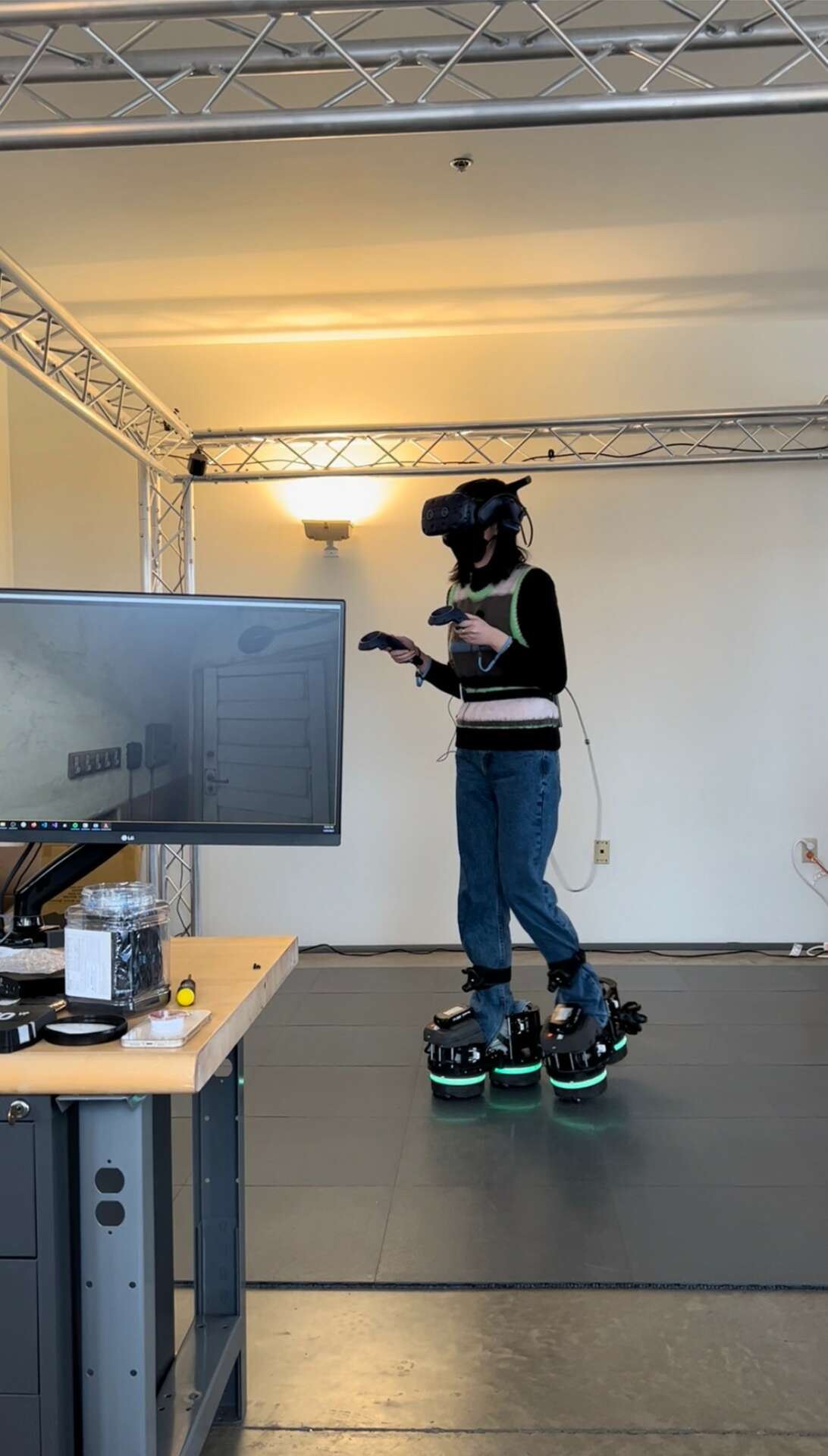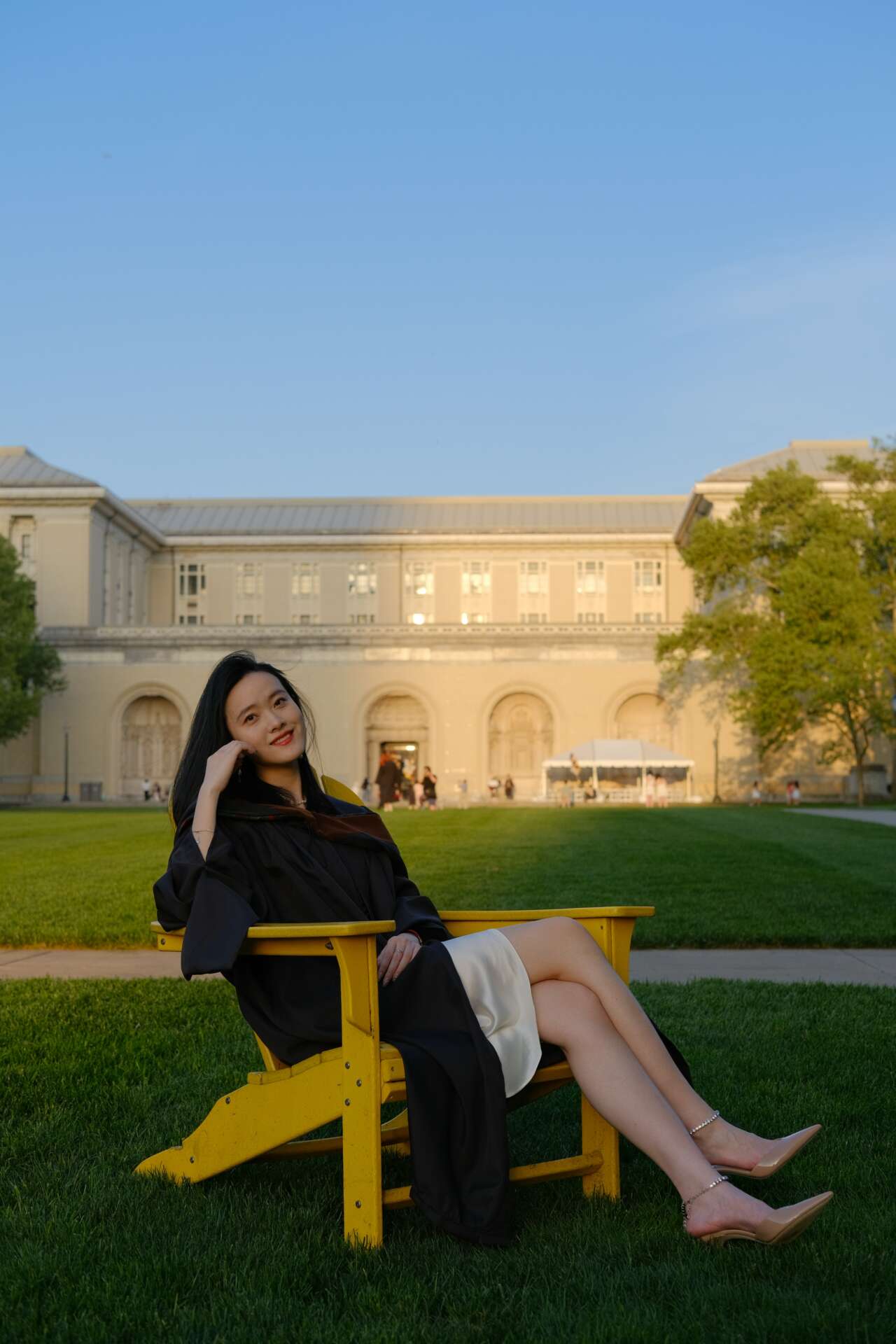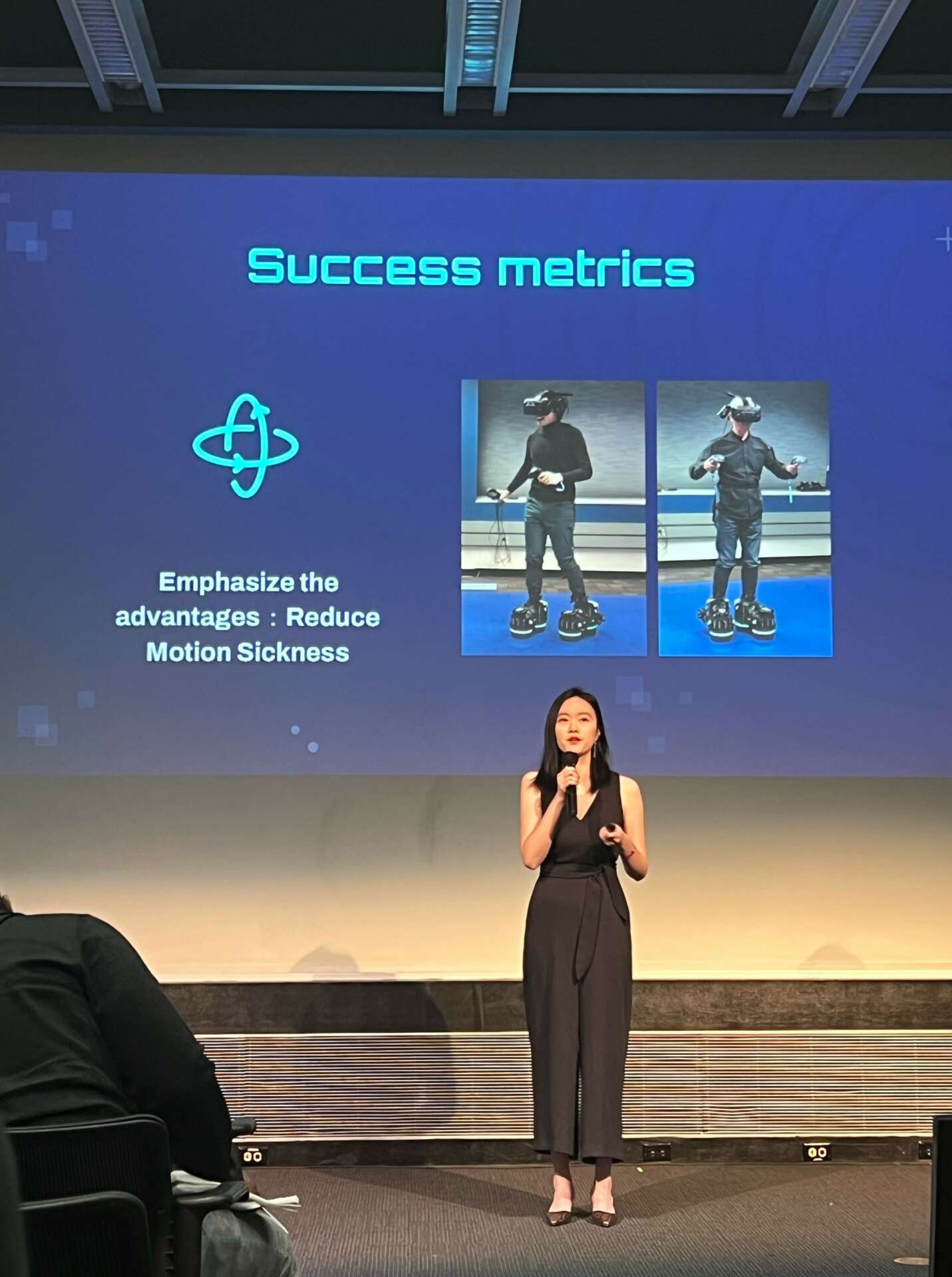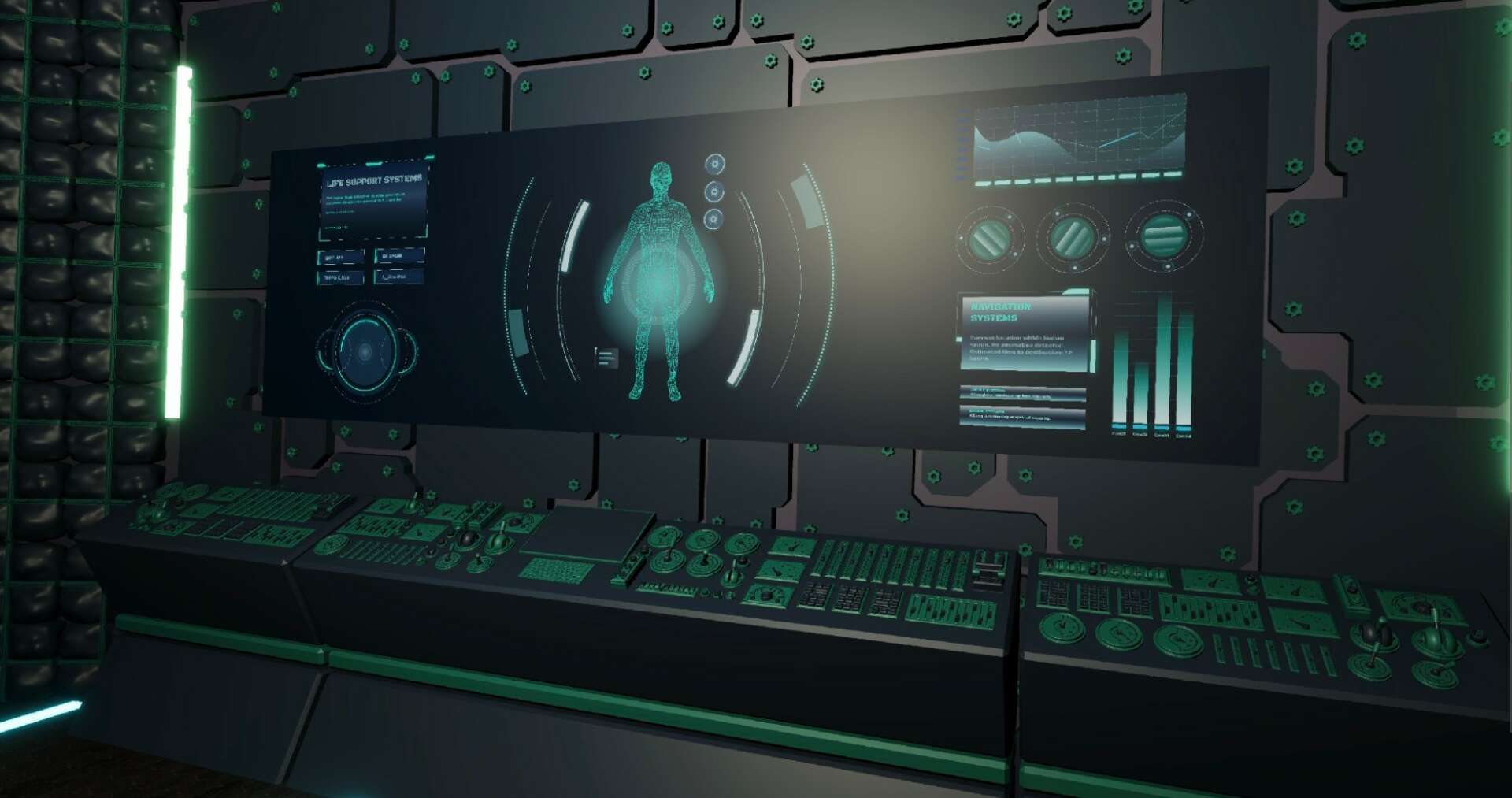We were lucky to catch up with Yuchan Wu recently and have shared our conversation below.
Yuchan, thanks for taking the time to share your stories with us today We’d love to hear about a project that you’ve worked on that’s meant a lot to you.
One standout project that holds immense meaning for me is the ‘Vektor’ experience at Ekto VR. It was a venture into uncharted territory, a journey that not only challenged our team’s creativity but also pushed the boundaries of what we thought was possible in the realm of virtual reality.
The project revolved around the creation of a 3-minute demo for a tradeshow, where our team aimed to showcase and enhance the user experience of VR boots*. What made this endeavor particularly meaningful was the fact that we were venturing into an unexplored field of technology, with no established guidelines to follow. It was a blank canvas, and we had to chart our own course.
*I will first introduce what is VR boots: VR boots, when paired with VR glasses, revolutionize the virtual reality experience by providing users with a novel means of navigating and exploring virtual worlds. Worn on the feet, these boots facilitate movement within the VR environment, enabling users to traverse various directions and cover more ground.
The underlying principle of VR boots is ingenious yet straightforward. Each step taken in the physical space prompts the boots to gently pull the user back to the starting point. This innovative mechanism allows users to continually move in different directions within the expansive VR world, all while requiring only a modest physical area in reality.
What sets VR boots apart is their ability to tackle the challenge of motion sickness often associated with VR experiences. By mimicking physical movement without actual displacement in the real world, these boots contribute to a more immersive VR encounter, enhancing user comfort and engagement.
Working in an agile mode in a fast-paced environment became the norm. Each week brought new challenges and opportunities. The need for constant adaptation and iteration became apparent as we delved into extensive research, developed prototypes, and engaged in agile sprints to keep pace with the project’s evolution.
My role as a UX designer extended beyond conventional boundaries. I was deeply involved in shaping the game design, mapping out intricate user flows, and conducting relentless rounds of user testing. The iterative nature of our work meant that feedback loops were constant, and improvements were a continuous process.
The heart of the project lay in our commitment to understanding the users. Regular interviews and feedback sessions became integral, allowing us to gather insights that fueled the evolution of our designs. It was a dynamic process, where every piece of feedback and every user interaction contributed to refining the user experience.
As the project progressed, the most rewarding aspect was witnessing the success of our efforts. The immersive VR experience we crafted not only showcased the allure of VR boots but also made a significant impact. The realization that our creation had made its way to the company’s newsletter and eventually onto the market was genuinely empowering.
The ‘Vektor’ project was more than just a successful demo; it encapsulated a journey of exploration, collaboration, and innovation. It symbolizes the beauty of embracing the unknown, navigating challenges, and emerging victorious in a space where creativity knows no bounds. The sense of empowerment and achievement from this project has left an indelible mark on my career, shaping my approach to UX design and reinforcing the importance of pushing boundaries to create truly meaningful experiences.


Awesome – so before we get into the rest of our questions, can you briefly introduce yourself to our readers.
—About me 🚀 I’m all about innovation and breathing life into ideas. UX design, to me, is more than pixels and wireframes; it’s about creating immersive experiences that linger in users’ minds. I bring a unique blend of storytelling, visualization, and a dash of gamification to the table – making each project a journey, not just a design.
🎨 Beyond the design realm, I’m a polymath at heart. My curiosity knows no bounds, navigating the intersections of design, entrepreneurship, and everything in between. Being a polymath allows me to approach challenges with a diverse perspective, always seeking innovative solutions.
Now, let me rewind a bit to where it all began. In my undergrad days, I delved into product design, playing with prototypes and getting hands-on with model-making. It was during my junior year that a lightbulb went off when I took a course called “Experience Design.” Suddenly, I realized design wasn’t confined to a single product but intricately woven into our daily lives.
That realization led me to the concept of user-centered design, and diving into Don Norman’s classic, “The Design of Everyday Things,” further fueled my passion. Empathy is my superpower, and my mission is simple – make people’s lives better. I’m driven by the desire to infuse warmth and meaning into everyday experiences.
Why UX design? Because it’s my way of making the world a little brighter, a little more user-friendly. I want my designs to be more than functional; I want them to resonate, to evoke emotions, and to connect people with the world in a meaningful way. That’s the heartbeat of why I’m here in this industry, doing what I do as a UX designer.
—What are you most proud of and what are the main things you want potential clients/followers/fans to know about you/your brand/your work/ etc?
I take immense pride in being a creative individual with a zest for exploring a myriad of endeavors. Last fall, I co-founded an online fashion and beauty brand specializing in press-on nail designs with a group of friends. This venture allowed me to seamlessly blend my creative art background with my UX skills.
The fusion of my creative instincts and professional expertise extended beyond designing nail art. I actively engaged in operating social media, conducting research, and applying my UX skills to understand our customers better. From user surveys to crafting user personas, this experience not only reinforced my UX capabilities but also compelled me to delve into various facets of digital marketing.
The journey has been a holistic learning experience. I discovered the joy of amalgamating creative ideas and professional skills to bring pleasure and assistance to people. It’s incredibly fulfilling to feel that I’m involved in something meaningful.
In essence, I see myself as a creative collaborator, a fast learner, always eager to expand my horizons. The fusion of creativity, professionalism, and a willingness to evolve defines my approach. I’m not just pursuing a brand; I’m on a continuous journey to grow and bring something special to the table.


What do you think is the goal or mission that drives your creative journey?
My creative journey is fueled by a deep-seated goal and mission. I see design as a powerful force for positive change, and my mission is to make a meaningful impact on people’s lives. So i think my goal is to create user experiences that go beyond functionality, resonating emotionally and enhancing the way people interact with the world around them.

In your view, what can society to do to best support artists, creatives and a thriving creative ecosystem?
1. Recognition and Appreciation: Society should recognize and appreciate the value that artists and creatives bring to culture, innovation, and community enrichment. This can be achieved through acknowledging their work, showcasing their contributions in public spaces, and celebrating their achievements.
2. Active Participation and Engagement:
Encouraging active participation from the broader community is vital. Regardless of the form of art or creativity, fostering an environment where people can actively engage, participate, and share their own creative expressions contributes to a dynamic and interconnected creative ecosystem. This can include community art projects, interactive exhibitions, or collaborative digital platforms that invite individuals to become an integral part of the creative process. When everyone feels empowered to contribute, the creative landscape becomes more diverse, vibrant, and reflective of the collective spirit of the community.
3. Collaboration and Networking:
Facilitating opportunities for collaboration and networking is crucial for a thriving creative ecosystem. Events, festivals, and digital platforms that bring artists together provide avenues for cross-pollination of ideas, skill-sharing, and the creation of vibrant creative communities.
4. Access to Education and Resources:
Providing accessible and quality education in the arts is crucial. Schools and communities should offer comprehensive arts programs, ensuring that aspiring artists and creatives have the necessary tools, skills, and knowledge to thrive in their chosen fields.

Contact Info:
- Website: www.opalinenails.com
- Instagram: opalinenailclub
- Linkedin: https://www.ywww.linkedin.com/in/yuchan-wu-447687227uchandesigns.com/
- Other: The website and the ins I’m providing is our nail brand. And the linkedin is myself. And my personal website is here: https://www.yuchandesigns.com/
Image Credits
@me in VR Boots in EKTO VR @graduate from CMU @me in GDC in SF @Final presentation in CMU @Vektor Project in EKTO VR(draft version) @Our brand Opaline nail club


